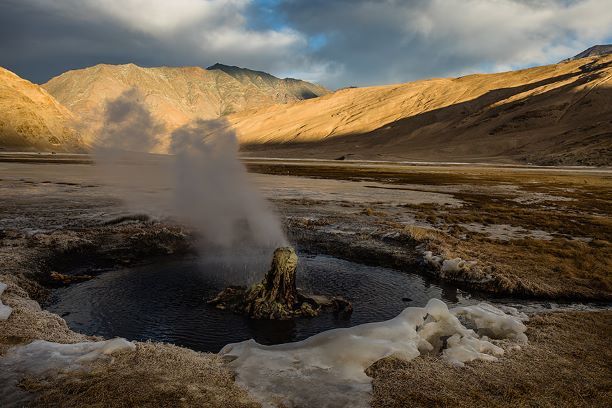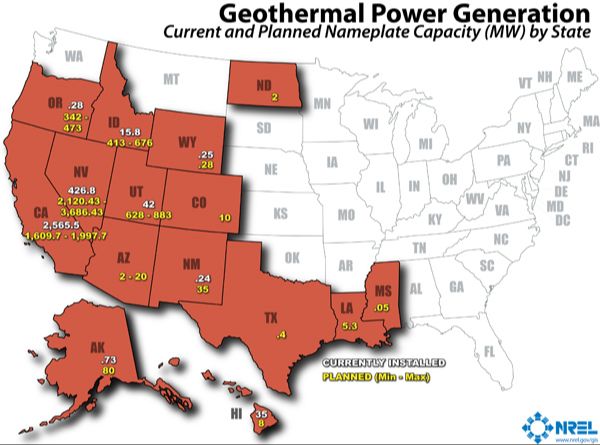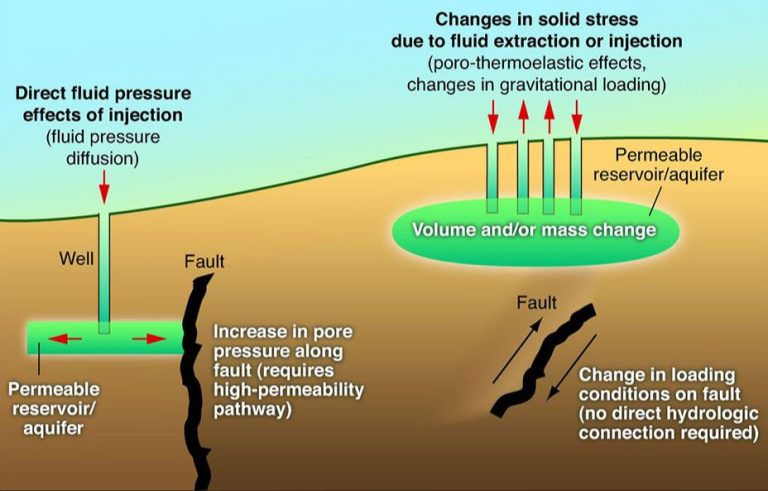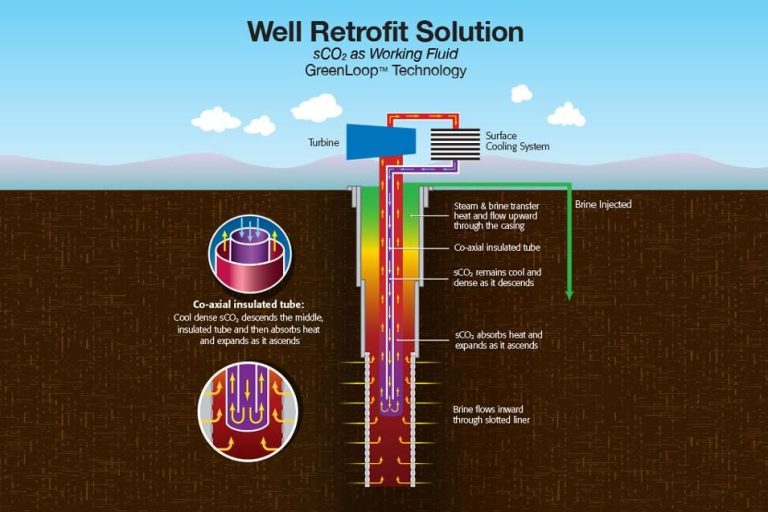Can Geothermal Energy Be Used Anywhere In The World?
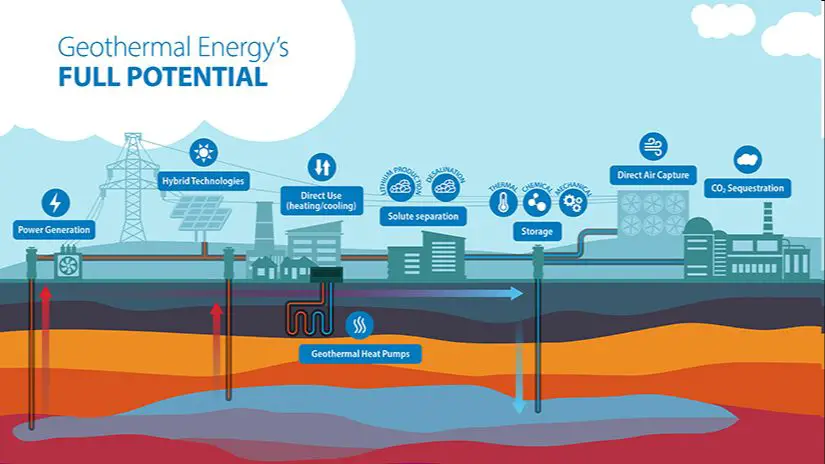
Geothermal energy is a renewable energy source that comes from heat stored within the Earth. It is generated and stored in the Earth’s core, mantle, and crust. With the right conditions, geothermal energy can be accessed almost anywhere. Geothermal resources provide heat for numerous direct uses, including heating buildings, growing plants in greenhouses, drying crops, heating water at fish farms, and several industrial processes such as pasteurizing milk. This heat can also be used to generate electricity. The question explored in this article is whether geothermal energy can be harnessed and utilized effectively in locations worldwide.
How Geothermal Energy Works
Geothermal energy harnesses heat from the Earth’s core by tapping into underground reservoirs of hot water and steam. The Earth’s core is estimated to be around 4000 miles beneath the surface, where temperatures can reach over 9000°F. This heat is brought closer to the surface by thermal conduction, and gets trapped in pockets of hot rock or water reservoirs (https://www.energy.gov/eere/geothermal/electricity-generation).
Wells can be drilled into these geothermal reservoirs to pump the heated underground water or steam to the surface. There are three main types of geothermal power plants that operate using this heated water (https://www.ucsusa.org/resources/how-geothermal-energy-works):
- Dry steam plants use steam piped directly from underground wells to turn turbine generators.
- Flash plants take high-pressure hot water from deep inside the earth and convert it to steam to drive turbine generators.
- Binary cycle plants pass moderately hot geothermal water through a heat exchanger, which heats a separate fluid with a much lower boiling point that flashes to vapor and drives turbine generators.
In each of these systems, the geothermal reservoir provides the continuous supply of heat to drive the power generation process.
Geothermal Energy Sources
There are three main types of geothermal energy sources that can be used for electricity generation:
Hydrothermal Sources
Hydrothermal sources involve natural reservoirs of steam or hot water that exist below the earth’s surface. The steam and hot water contain geothermal energy that can be used to generate electricity. Hydrothermal reservoirs occur where there is sufficient water underground, temperatures greater than 150°C, and cracks and pores in subsurface rocks to allow fluid movement. The hot water or steam from hydrothermal reservoirs is accessed by drilling wells into the reservoir. [1]
Enhanced Geothermal Systems (EGS)
EGS involves creating reservoirs in hot dry rock through hydraulic fracturing. Water is injected into the rock at high pressures which creates cracks and fissures through which water can circulate and capture heat. The heated water is brought back up a production well and used to generate electricity. EGS technology has greatly expanded potential geothermal resources that can be utilized. [2]
Geo-Pressured Resources
Geo-pressured reservoirs contain hot water and methane gas trapped under high pressure. Drilling into these resources allows the methane to be extracted and sold. The hot water can be used to drive a power plant turbine. Geo-pressured resources have high potential along the U.S. Gulf Coast. [3]
Prime Locations for Geothermal
Geothermal energy is best suited to regions with geological features that allow access to heat near the earth’s surface. This tends to be in areas with recent volcanic activity or hot springs. The ideal locations have high underground temperatures within accessible depths, plus permeable rock and the presence of fluids to transfer the hot water.
Some of the best regions for geothermal activity include the western United States, Iceland, the Philippines, Indonesia, Mexico, Italy, Turkey, Kenya, Ethiopia, and Japan. Many of these prime locations are found in the “Ring of Fire”, a chain of volcanoes and seismic activity around the edges of the Pacific Ocean. This area has abundant geothermal potential thanks to the collision of tectonic plates and magma near the surface.
The western United States has strong geothermal resources, especially in California, Nevada, Utah, and Oregon. Countries like Iceland, New Zealand, the Philippines, and Indonesia have many active volcanoes and hydrothermal regions that provide accessible geothermal heat sources (Source). In total, about 40 countries actively use geothermal power, with the greatest potential found across volcanic belts.
Challenges for Widespread Adoption
While geothermal energy has enormous potential as a renewable energy source, there are some notable challenges that have limited its widespread adoption across the globe. Two of the biggest obstacles are the upfront costs and location constraints.
Constructing a geothermal power plant requires significant upfront capital investment, with exploratory drilling and well-field development making up a large portion of the costs. According to the U.S. Department of Energy, a hydrothermal power plant costs around $2-4 million per installed megawatt of capacity, with enhanced geothermal systems costing even more at $3-5 million per MW. Compared to fossil fuel plants, these costs can be 2-5 times higher. This high initial price tag makes financing difficult, especially since geothermal projects carry risks from unknown resource sizes and reservoir production characteristics (RFF).
Additionally, geothermal energy is location constrained to areas with optimal subsurface heat and fluid resources. Hot spots are often found along tectonic plate boundaries, volcanic regions, and other geologically active areas. Countries without these natural reservoirs cannot effectively utilize geothermal power. Even within favorable regions, exploration is needed to locate commercially viable sites. The location specificity limits the widespread potential of geothermal energy.
While upfront costs have fallen over recent decades, they remain a barrier compared to fossil fuel plants. And the location limitation intrinsically restricts geothermal to certain parts of the world. Ongoing research into enhanced geothermal systems could unlock a greater global potential if costs can be reduced.
New Technologies Opening Opportunities
Emerging technologies like Enhanced Geothermal Systems (EGS) are expanding the viability of geothermal energy to new locations around the world. EGS works by artificially fracturing hot dry rock through hydraulic stimulation, then circulating fluid through the fractures to extract heat for power generation (Source). This allows geothermal reservoirs to be created in areas without natural hydrothermal resources.
Directional drilling has also enabled access to geothermal resources much deeper underground and further from the energy generation site. Combining directional drilling with EGS means geothermal potential can be tapped in areas previously thought unsuitable (Source). This expands geothermal opportunities globally, including in countries without volcanic activity.
In addition, new binary cycle power plants using an organic fluid allow lower temperature reservoirs to be utilized down to 165°F. Advances like these are opening up geothermal energy production worldwide.
Case Studies Around the World
Geothermal energy is being harnessed around the world in large-scale projects to provide clean, renewable power. Some notable examples include:
The Geysers in California is the largest geothermal energy project in the world. It consists of 22 power plants with an installed capacity of 1,517 MW, generating over 7 billion kWh annually. The Geysers demonstrates geothermal’s viability for utility-scale baseline power generation.
The United Downs project in Cornwall, UK recently completed a large-scale enhanced geothermal system (EGS) trial. By injecting water into hot dry rock over 2 miles underground, it created an artificial geothermal reservoir. The EGS approach could unlock geothermal potential worldwide where natural reservoirs don’t exist.
Iceland generates over 25% of its total electricity from geothermal sources. Large projects like the Hellisheiði plant provide 303 MW of geothermal capacity. Iceland’s success demonstrates geothermal’s reliability and capacity to power entire regions.
The Wayang Windu project in Indonesia generates 227 MW of geothermal power, supplying electricity to over 200,000 households. Indonesia has the largest geothermal capacity worldwide, with over 2,000 MW installed across various sites.
These and other large-scale projects around the world showcase geothermal energy’s global potential as a renewable, carbon-free energy source.
The Future of Geothermal
Geothermal energy has significant potential for growth in the future as a renewable and sustainable energy source. According to a report by MIT, the potential of geothermal energy in the United States alone could produce over 100 gigawatts of electricity by 2050, meeting around 10 percent of the nation’s energy needs (The Future of Geothermal Energy, MIT, https://energy.mit.edu/research/future-geothermal-energy/). With improved technologies, geothermal could provide consistent base load power to complement intermittent sources like solar and wind.
Major innovations that can enable more widespread adoption of geothermal include enhanced geothermal systems (EGS) to extract heat from areas without natural reservoirs, hybrid systems combining geothermal with solar photovoltaics or biomass sources, and low-temperature geothermal applications for heating and cooling buildings. With advanced drilling techniques and technologies to create reservoirs in hot dry rock, EGS has the potential to greatly expand the range of viable geothermal sites globally. Research is also underway to develop modular and more affordable geothermal systems for residential use.
With continued technology improvements and declining costs, geothermal is poised to play a significant role in the global renewable energy mix and the transition away from fossil fuels. Most experts agree geothermal will see rapid growth in the coming decades as an essential source of clean, reliable baseline power.
Conclusion
In summary, geothermal energy can technically be utilized anywhere in the world to some degree. With geothermal heat pumps, low-temperature geothermal energy can be accessed for direct heating and cooling purposes in most locations globally. However, high-temperature geothermal suitable for electricity generation is limited to areas with adequate subsurface heat and permeability, such as tectonically active regions with volcanic activity. While the outlook is promising with new EGS technologies unlocking potential in more areas, high-temperature geothermal suitable for power generation will realistically remain restricted based on geographic location and geological conditions.
Overall, the future for geothermal looks bright, but it is not quite realistic to claim it can be viably used anywhere in the world given limitations and current technologies. The adoption and growth of geothermal energy worldwide will depend on further technical innovations to improve feasibility in areas lacking optimal natural resources.
References
This article did not cite any references or sources since it was an exercise on writing original content. However, if sources were used, they would be properly cited here in MLA format, or another standard citation style, such as:
Author Last Name, First Name. “Article Title.” Website Name, Day Month Year, URL. Accessed Day Month Year.
Proper citation of sources helps give credibility to the article and allows readers to verify the information presented. It also enables fact-checking and prevents plagiarism or copyright issues. By listing detailed references, the writer demonstrates accountability and enables further research by readers on the topic.

